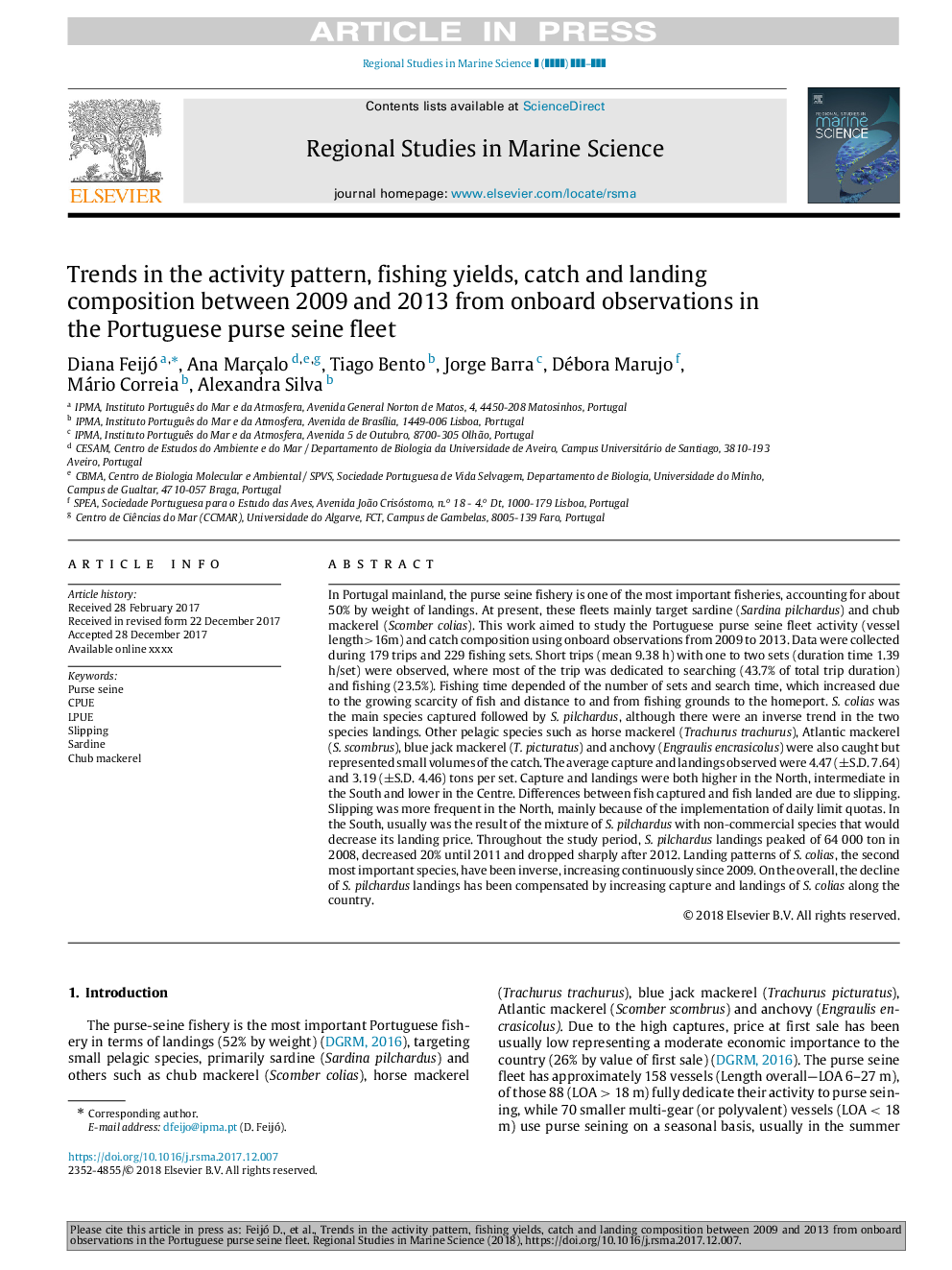| کد مقاله | کد نشریه | سال انتشار | مقاله انگلیسی | نسخه تمام متن |
|---|---|---|---|---|
| 10223692 | 1701043 | 2018 | 10 صفحه PDF | دانلود رایگان |
عنوان انگلیسی مقاله ISI
Trends in the activity pattern, fishing yields, catch and landing composition between 2009 and 2013 from onboard observations in the Portuguese purse seine fleet
ترجمه فارسی عنوان
روند در الگوی فعالیت، بازده ماهیگیری، گرفتن و فرود در بین سال های 2009 و 2013 از مشاهدات کشتی در ناوگان راهبان دریایی پرتغالی
دانلود مقاله + سفارش ترجمه
دانلود مقاله ISI انگلیسی
رایگان برای ایرانیان
کلمات کلیدی
موضوعات مرتبط
مهندسی و علوم پایه
علوم زمین و سیارات
اقیانوس شناسی
چکیده انگلیسی
In Portugal mainland, the purse seine fishery is one of the most important fisheries, accounting for about 50% by weight of landings. At present, these fleets mainly target sardine (Sardina pilchardus) and chub mackerel (Scomber colias). This work aimed to study the Portuguese purse seine fleet activity (vessel length>16m) and catch composition using onboard observations from 2009 to 2013. Data were collected during 179 trips and 229 fishing sets. Short trips (mean 9.38 h) with one to two sets (duration time 1.39 h/set) were observed, where most of the trip was dedicated to searching (43.7% of total trip duration) and fishing (23.5%). Fishing time depended of the number of sets and search time, which increased due to the growing scarcity of fish and distance to and from fishing grounds to the homeport. S. colias was the main species captured followed by S. pilchardus, although there were an inverse trend in the two species landings. Other pelagic species such as horse mackerel (Trachurus trachurus), Atlantic mackerel (S. scombrus), blue jack mackerel (T. picturatus) and anchovy (Engraulis encrasicolus) were also caught but represented small volumes of the catch. The average capture and landings observed were 4.47 (±S.D. 7.64) and 3.19 (±S.D. 4.46) tons per set. Capture and landings were both higher in the North, intermediate in the South and lower in the Centre. Differences between fish captured and fish landed are due to slipping. Slipping was more frequent in the North, mainly because of the implementation of daily limit quotas. In the South, usually was the result of the mixture of S. pilchardus with non-commercial species that would decrease its landing price. Throughout the study period, S. pilchardus landings peaked of 64 000 ton in 2008, decreased 20% until 2011 and dropped sharply after 2012. Landing patterns of S. colias, the second most important species, have been inverse, increasing continuously since 2009. On the overall, the decline of S. pilchardus landings has been compensated by increasing capture and landings of S. colias along the country.
ناشر
Database: Elsevier - ScienceDirect (ساینس دایرکت)
Journal: Regional Studies in Marine Science - Volume 23, September 2018, Pages 97-106
Journal: Regional Studies in Marine Science - Volume 23, September 2018, Pages 97-106
نویسندگان
Diana Feijó, Ana Marçalo, Tiago Bento, Jorge Barra, Débora Marujo, Mário Correia, Alexandra Silva,
